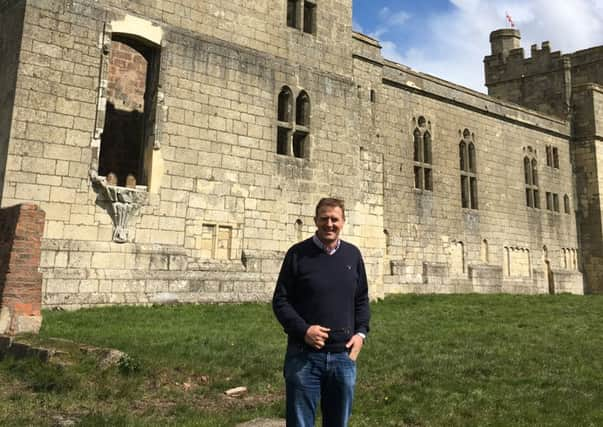Farmer ensures centuries-old Wressle Castle is restored


Robert Falkingham grew up in the shadow of Wressle Castle, near Howden which is the only medieval castle in East Yorkshire, and his young family are now doing the same.
The Falkinghams have farmed at Wressle for four generations; they were originally tenant farmers but bought their farm, and with it the castle, when the estate that it once formed part of was sold off in the 1950s.
Advertisement
Hide AdAdvertisement
Hide AdBuilt towards the end of the 14th century for Sir Thomas Percy, who came from a Yorkshire family of great status, a devastating fire forced the last occupants to leave the castle in 1796.
Before then it had, at various periods in its history, passed into royal control. In fact Henry VIII is known to have stayed there for three nights in 1541.
But after its blazing demise it stood empty ever and so it would for years and years. The ruins gradually became overgrown and fell into an increasingly desperate state of disrepair - until recently.
Historic England - formerly English Heritage - had considered the castle to be a ‘building at risk’, but now, thanks to a two-year restoration project spearheaded by farmer Robert, it has been removed from the list.
Advertisement
Hide AdAdvertisement
Hide Ad“As a child, I took the castle for granted, as my children do now; it was just there,” he said.
“I’d been seeking funding to help restore and preserve it for a number of years, but not had much success. It was overgrown and the stonework was crumbling so badly I feared that some sections were going to break away.”
When Robert discovered that historic buildings now come under the remit of Natural England’s Higher Level Stewardship scheme, he decided to approach the York office. Just a few months later, he received the news that Wressle Castle was eligible for funding.
This, together with grants from Historic England and The Country Houses Foundation, made it possible for him to hire the services of Historic Property Restoration, a specialist building restoration firm based in North Shields.
Advertisement
Hide AdAdvertisement
Hide AdThe castle originally comprised of four ranges set around a central courtyard, with a tower at each corner and a gatehouse tower in the eastern wall, facing Wressle village. It was surrounded by a moat, gardens and a deer park to the north. The limestone used to construct it would have been transported down the nearby River Derwent, which borders the western edge of the site.
To preserve the best of the features that remained centuries on and for several months, the castle was encased in scaffolding as experts replaced missing mortar, repaired crumbling stonework and added steel pins to strengthen the structure.
Work was completed earlier this year when the grounds were cleared, along with what remains of the moat.
New information boards have been put in place to explain the castle’s history and show visitors how it would have looked when the entire structure was still standing and occupied by the Percy family.
Advertisement
Hide AdAdvertisement
Hide AdRobert said: “I’m absolutely delighted with the whole thing - it looks fantastic. I’m very grateful to all the organisations that helped us along the way.
“I would love to go back to the 15th century to see how the castle looked in its heyday; it must have been magnificent. It’s wonderful to know that the work we’ve done ensures that it will remain standing for at least another hundred years.”
As there is no public access to the castle, Robert and his wife, Sarah, are planning a series of open days to give local residents an opportunity to see the work that they have accomplished.
The first Wressle Castle open days will take place on Saturday, June 25 and Sunday, June 26, from 11am-4pm. Admission is free of charge. For more information, visit www.wresslecastle.org or follow Wressle Castle on Facebook and Twitter.